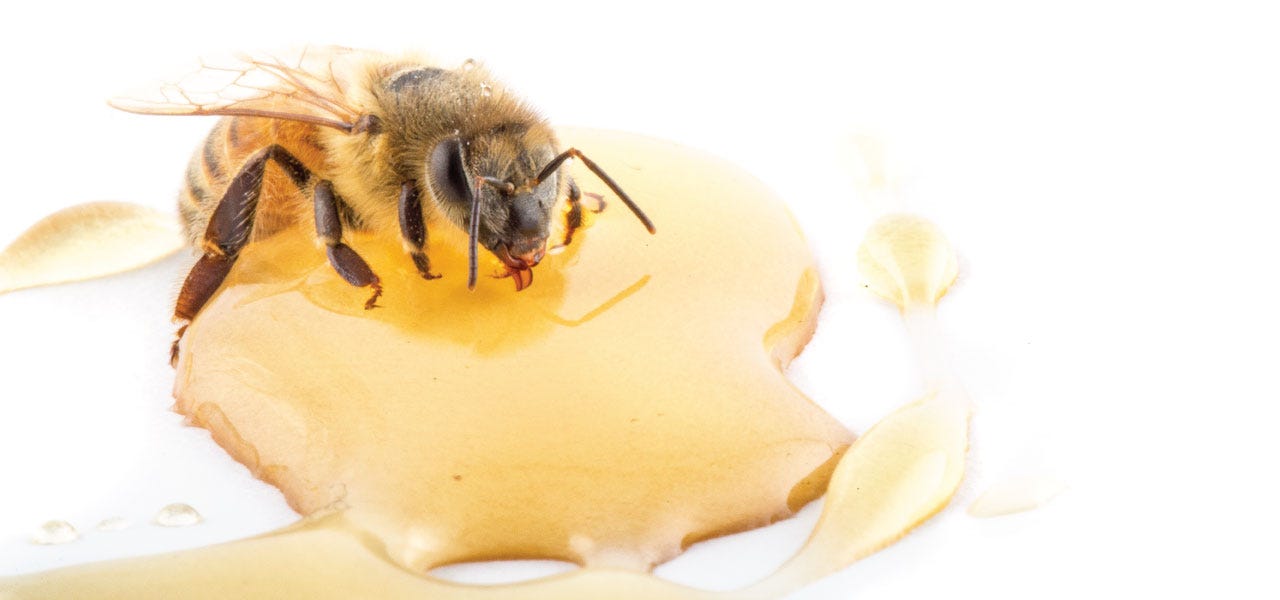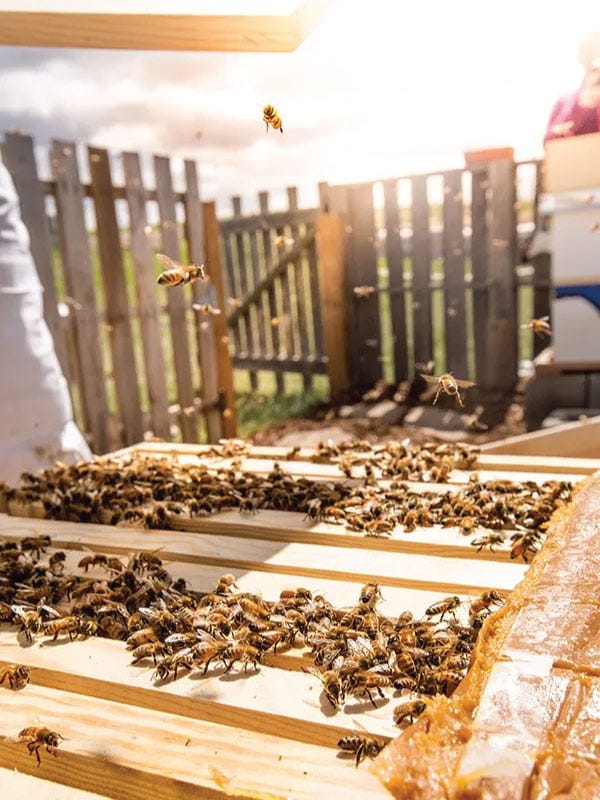Extracting Honey: Spinner Extraction VS Crush & Strain Method

With the amount of moisture we've had this year, it's time to start thinking about extracting your honey from those supers.
When thinking about extraction as a backyard beekeeper, there's a number of options available to you, but how do you know what option is right for you?
Here's what you need to consider when getting ready to harvest your honey.
What's the scale of your "Bee Yard"?
If you have 5-10+ hives that all have full honey supers, that will be roughly 20-30 honey frames per hives (2-3 supers) times, say, 8 hives.
That's probably going to be more than 150+ frames of honey. If you are looking at that many frames, you'll probably want to opt for a quicker method than the crush and strain method.
Need some supers to keep up with production this year? Ours are fully assembled with frames and available online here.
Now, if you have less honey supers, say two or three established hives, then it will be much easier to handle that amount of frames in your kitchen or garage, and the crush and strain method will probably be your best bet.


Difference between crushing and uncapping your honey comb
Think of each cell in your full frame of comb as individual cups filled up and sealed with honey.
When you "uncap" them, essentially you are lifting the lids from those cups (and leaving the cup itself) so the honey can drain out. By uncapping these cells, there is less wax/comb that you need to worry about when you "filter" your honey.
Something else to consider is that there is less damage to the actual comb itself when you uncap them: that means when you put the frames back into the hive after extraction, the bees don't have to expel energy rebuilding that comb and can go right back to storing honey for winter!
If you live inside city limits, then you'll want to read this piece on bees.
So you're ready to uncap your hives and go, but wait. When you uncap your honey cells, you should use a spinner, because without the centrifugal force generated by the honey spinner, it will take an interminably long time for your honey to drain.


Crushing your honey comb to extract it is an easier way to go if you're looking to utilize gravity in your filtration process because more of the "cup" is broken, and the honey can easily drain through your filtration device.
If you are leaving an extra super on your hive for winter stores like we did last winter, then you can crush and strain with abandon, and still enjoy your raw honey.
How to use the Honey Spinner Extraction Method
A honey extractor, like the one we stock at North 40 Outfitters, allows the hobbyist beekeeper to spin and extract two full frames of honey at a time.
You can buy spin extractors that are manual crank or electric and that hold 2-48 frames and on up. The way you use them is pretty straight forward depending on the size of your extractor.
For this article we'll examine the spinner we sell at North 40, which holds two frames at a time.
- Step One: Remove frames from your hive using a hive tool or other pry bar (wear a bee suit and gloves like these).
- Step Two: Use the uncapping tool you can purchase here and uncap all honey cells in the full frame, taking care to wipe comb and wax off on a towel or napkin occasionally to reduce build up on the tool.
- Step Three: Place full frames inside the extractor and secure them according to the label instructions.
Check out our selection of beekeeping supplies we have online and available to you by clicking here.
Extracting honey with the Crush & Strain Method
This is the simplest extraction method there is, and if you're a first year beekeeper with only a few hives like Drew and me, this will probably be the best bet for you because you don't need to invest money into machinery like spinners or shakers for larger scale operations.
So how do you "crush and strain" your full honey frames? Well, in this case, it's all in the name:
- Crush for this method, you can use anything that comes to mind as a scraping tool (or hot knife); a putty knife, your hive tool, almost anything can work here. If you want to go au naturale use your hand. Simply take your hive tool and scrape everything from the frame itself wax, comb and full honey cells onto a receiving tray.
- Strain Collect your honey, wax and comb and pour it over a simple wire mesh strainer to separate the honey from the wax and comb of your harvest.


Viscosity and why heat matters to your honey
If you are thinking about harvesting your honey, using either of the methods we discussed above, then you need to take into account the viscosity of your honey. What's viscosity? Think of viscosity like "thickness", so honey has a higher viscosity (thickness) than water.
When harvesting honey, the best time to do that is when the viscosity of your honey is lower, aka, when it's warm. With a low viscosity, your honey will drain more completely from the crush and strain method, plus it will spin out from the comb better when using the spinner method.
Is there another way to extract your honey?
Backyard beekeepers are a fanatical group, and as the old adage goes, "ask five beekeepers the best way to do [X], and you'll have five different answers."
Well- we want those answers! At North 40 Outfitters, we're always trying to learn, and we've found that the easiest way to do that is to ask.
North 40 Tip: Use any of the above methods when it is hot out, or in a heated space. Why? Because heat will decrease the viscosity of the honey you are straining, allowing it to run smoothly and reduce the amount of time you need to wait to filter your new crushed (or spun) honey!
So, please, if you have any tips or tricks on extraction that could help our readers (or Drew and me, first year beekeepers), please share in the comments. If there is something you think that could help people out, we'd love to know about it and would be happy to share it here.
Thanks for checking out the blog and sharing this information with us. Please let us know if you have any other helpful insights.
Best regards,
We've answered your wonderful question right here: https://north40.com/life/beekeeping-harvesting-honey-with-a-solar-wax-extractor-versus-a-solar-wax-melter
Cheers,
Cutter





